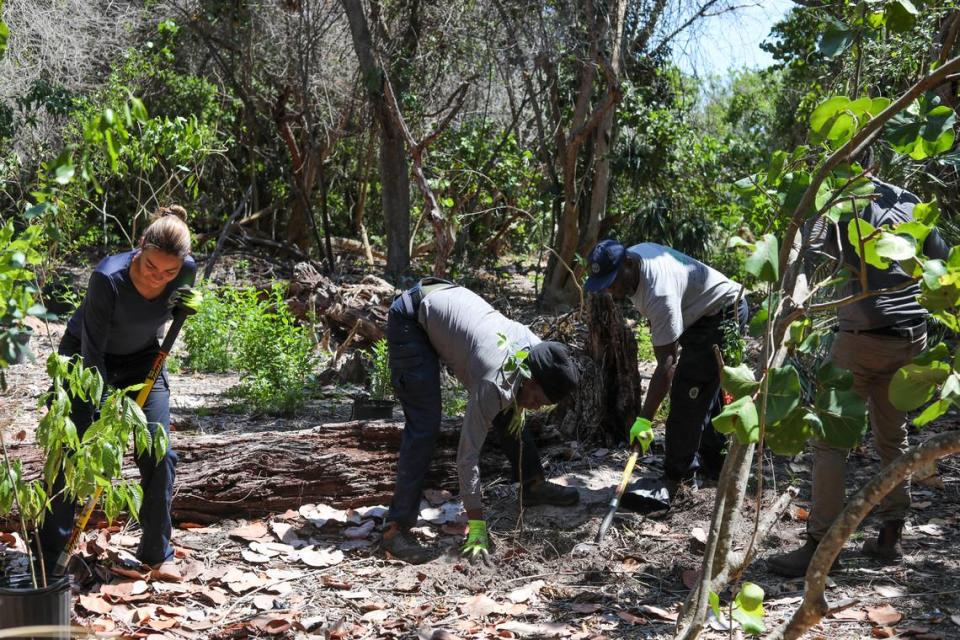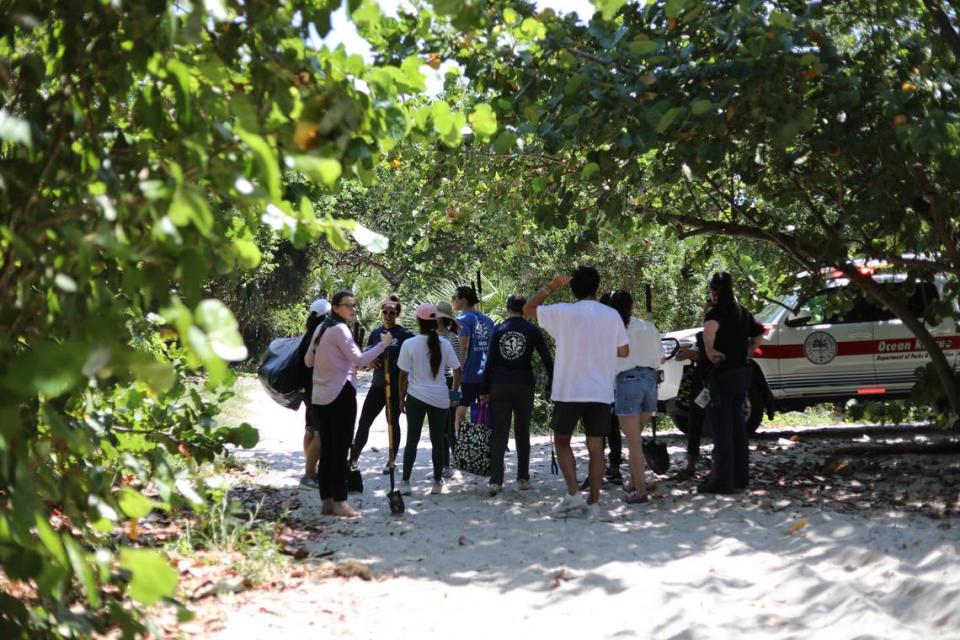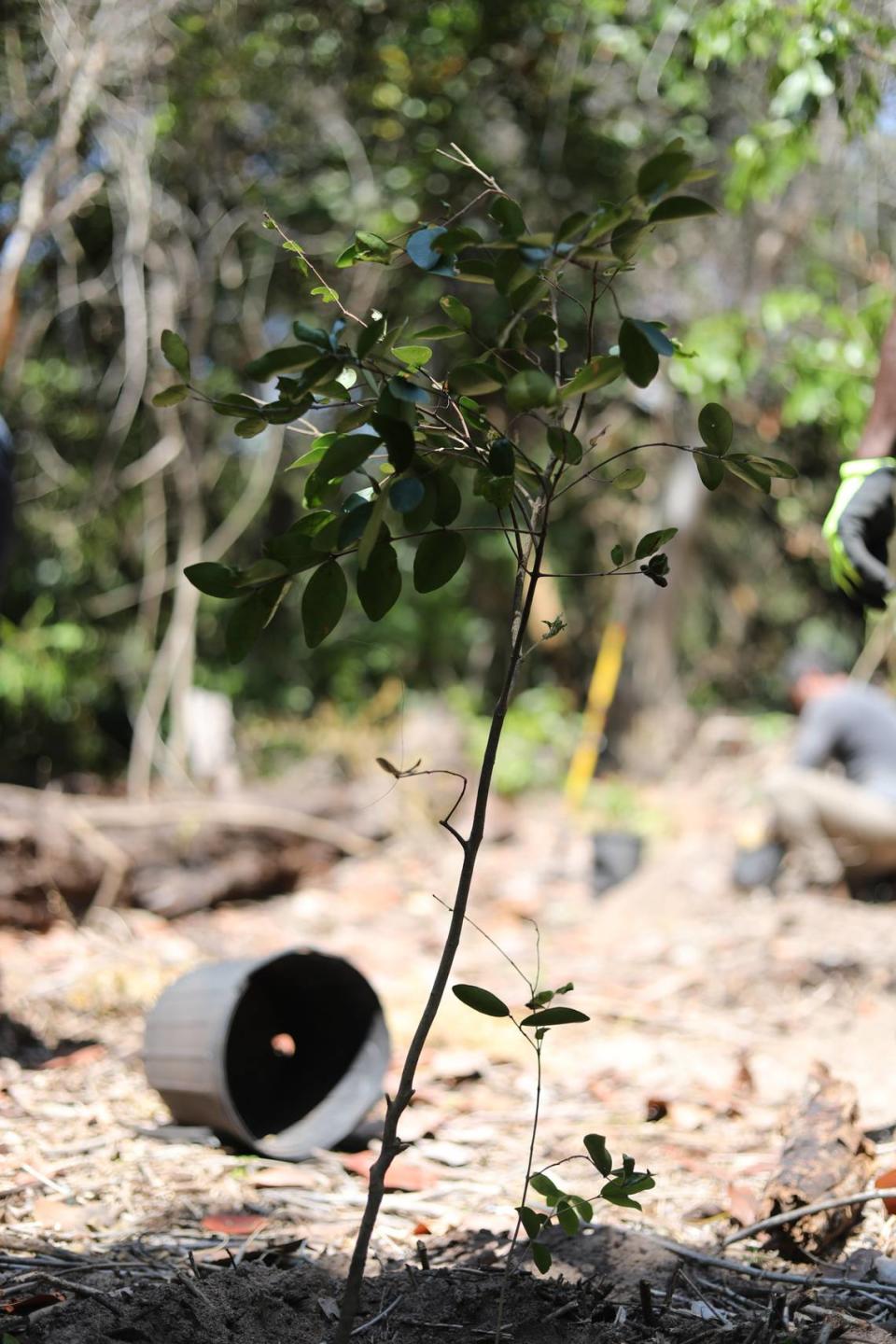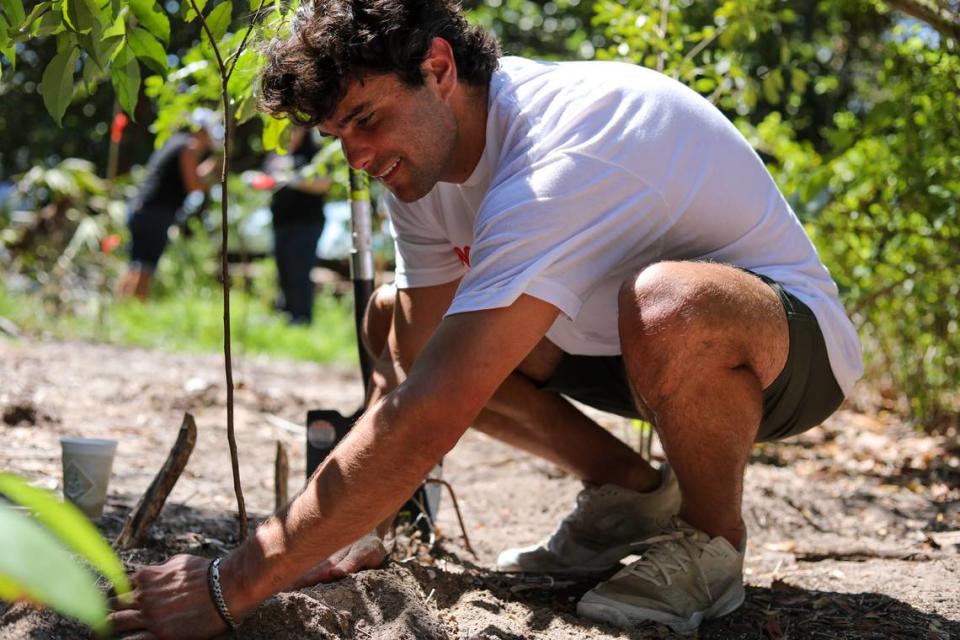Restoring a barrier island forest may be key to protecting Miami from storm surge
After months of using weed-killers, saws, shovels and hand-yanking invasive latherleaf fern out of a tropical forest on Virginia Key Beach Park, City of Miami parks naturalist Gloria Alejandra Antia was finally able to begin the process of rebuilding.
Antia dug a hole and planted a small native tree just steps from the shoreline.
“The health of this island, the health of this ecosystem is crucial for our homes, it protects the mainland,” Antia said.
Sand dunes and tropical hardwood hammocks like this one along the coast of South Florida are home to rare plants and animals found nowhere else in the world. They are also disappearing habitats threatened mostly by development and population growth but also natural disasters. A devastating scouring from Hurricane Andrew in 1992 opened the native forest on Virginia Key to invasive plants that profoundly changed the ecosystem on the barrier island.

That’s not good for people either. Healthy dunes and coastal or maritime forests are natural defenses against both hurricane storm surge and sea-rise, absorbing water and pounding waves. Virginia Key, a barrier island between the Atlantic Ocean and Biscayne Bay, acts as a buffer for mainland Miami and restoration projects like this may become important parts of plans to protect South Florida from flood waters driven by climate change.
“When we create natural habitats we can work with nature,” said Rachel Silverstein, scientist and founder of Miami Waterkeeper, a clean water advocacy non-profit partnering with Miami’s parks and recreation department in the project. “If we can do green infrastructure and support nature to provide the benefits it provides naturally when it’s healthy, it will increase in its value and protection over time.”
Silverstein hopes more nature-based solutions such as restoration of coral reefs, dune systems, and hardwood hammocks make their way into the U.S. Army Corps of Engineers’ revised storm surge plan for Miami. She was among the environmentalists that opposed an initial billion-dollar plan that included a 30-foot tall,mile-long flood wall along the bay, which would also cut some residential neighborhoods in half, as well as flood gates across the Miami River, Little River and Biscayne Canal. Mayor Daniella Levine Cava put a stop to the Army Corps’ proposal and a new resiliency plan is due in August.

“We are having a once-in-a-generation funding situation and we have to get it right,” Silverstein said. “If we just default to putting up pumps and walls and storm gates everywhere we are going to end up with a place that we don’t even want to live.”
Though the Miami-Dade Parks and Recreation department naturalist division is helping direct the Virginia Key project, it’s made up of only six people, and the ongoing work depends largely on once-a-month volunteer crews. Earlier this month, the volunteers included Elevate Prize Foundation winners, who were flown to Miami from around the world for a summit that included a day of service.
One volunteer, Nelly Cheboi, said she planned to apply lessons she learned from the hardwood hammocks off Miami back home to her school in Kenya.

“I see this in Kenya too, our rivers are drying up and there’s a lot of deforestation,” Cheboi said. “It was a really nice experience to learn ways to plant trees. The way I plant my trees I never take roots out, I always dig too deep.”
The work is taxing. Temperatures were in the 90s and the sun was bearing down on the volunteers as they shoveled wide holes into the sandy ground. But once the project is finished, the trees should fill in the open spaces and create a shaded canopy.

Antia said mangrove restoration has been a success at Virginia Key Beach and the forest work is now in a “maintenance phase.” Staff and volunteers will return for around three to five years to remove new exotic seedlings that might compete with the native plantings. Native trees, including species like Biscayne prickly-ash, help hold loose soil and slow down erosion. Invasives like Brazilian pepper and latherleaf fern, have weaker root systems and are less resistant to wind and salt water.
“The response from mangroves once we have done the restoration work has been excellent, they are pretty resilient and once you remove exotics they do a good job on their own,” Antia said.
This climate report is funded by the Lynn and Louis Wolfson II Family Foundation in partnership with Journalism Funding Partners. The Miami Herald retains editorial control of all content.

